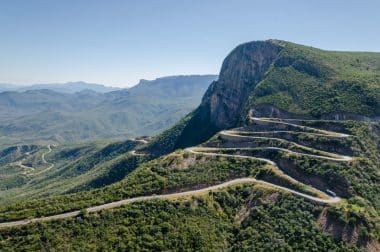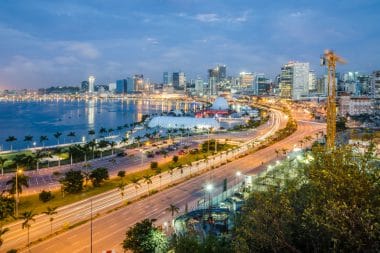
As a fascinating and often underestimated destination, Angola has so far been spared mass tourism. This makes a trip to the south-west African country a special travel destination. In addition to lively cities and authentic villages, it is the beautiful nature of the country that captivates travelers.
Rich in mineral resources and uniquely beautiful in terms of landscape, Angola looks back on an extremely eventful history. For example, Angola’s colonial era was heralded at the end of the 15th century by Portuguese sailors who explored Angola from Congo. With the Portuguese, the slave trade also began in Angola, which was operated until the middle of the 19th century. According to estimates, over 2 million people were enslaved by the colonial rulers and sold mainly to South America. Officially, the country was declared a colony in 1653, although the military base of Luanda had already existed since 1575. The cane sugar and coffee plantations that are still in operation today also date back to colonization. In the 1960s, Angola was still ruled by Portugal . Again and again there were uprisings and it was not until 1974 that foreign rule ended. However, due to the unresolved balance of power in the country, there were repeated fights that led to a civil war in which countless people lost their lives. Traces of the country’s history can still be found everywhere today.
Today, Angola presents itself as an up-and-coming country and fascinates with its special features. The country is divided into three climate zones, which ensures a particularly diverse flora and fauna. But the cultural peculiarities are also fascinating and the unique sights of the country make Angola an interesting travel destination.
Angola’s national parks and unique nature

With nine national parks, 18 forest reserves and protected areas, Angola is a true paradise for nature lovers. As early as the 1930s, protected hunting grounds were designated by the colonial administration. These areas are now part of the Kissama National Park. At 46,072 km², Murvinga National Park is the largest protected territory in the country. Africa’s fascinating wildlife combined with its uniquely beautiful landscapes captivate nature lovers from all over the world, making Angola a perfect place to go on a photo safari.
A special highlight is the Kavango-Zambezi Protected Area (KAZA). The area with its area of 520,000 km² is the second largest protected area in the world. The protected area includes a total of 21 national parks and game reserves, which are connected by corridors. In addition to the natural areas of Angola, natural areas in Botswana, Namibia, Zambia and Zimbabwe also fall within the special protection area. In addition to preserving biodiversity, KAZA is also intended to secure new development opportunities for the population, promote tourism and cross-border cooperation consolidate peace between nations.
M’banzai Congo – Angola’s first World Heritage Site
Once the political and spiritual capital of the Kingdom of Congo, M ́banzai Congo now invites you on a fascinating journey into the past. The UNESCO World Heritage Site includes archaeological relics of the former kingdom, which existed from the 14th to the 19th century. But the buildings of the Portuguese colonial era of the old town are also part of the World Heritage Site. Among other things, the ruins of a cathedral from the 16th century can be found in M ́barzai Congo, which is one of the oldest churches in Africa. But also remains of the royal plalast Tadi Dia Bukukua, the cemetery of the Congo kings and much more make a visit to M ́banzai Congo an unforgettable experience.
The capital Luanda

Around 5 million people live in the capital of Angola. It is one of the largest cities in Africa and so there is always a lot of hustle and bustle on the streets. Particularly worth seeing is the Augostinho Neto Mausoleum, which characterizes the skylein of the city with its obelisk-like shape. The mausoleum is dedicated to Augustinho Neto, the country’s first president who fought for Angola’s independence.
One of the most important sights of the city is also the Fortaleza de Sao Miguel. The fortress was built in 1576 and was once the administrative center of the Portuguese colonial rulers. Today, the premises of the fortress are used as an army museum.
No less interesting is the Fortaleza de São Pedro da Barra, built in the 17th century. It was once built for protection, but in the course of history it was used as a transshipment point for the slave trade. Between 1961 and 1975, it served as a prison for Angolan nationalists during the struggle for independence.
Other cities in the country
Sao Felipe de Benguela
The city in Benguela Bay is the third largest in the country and the main base of the Benguela Railway, which runs through several African states. The city’s fortress is particularly worth a visit, as it offers a fascinating view of the Benguela.
Huambo
Located in the west of the country, Huambo was once called Nova Lisboa (New Lisbon). Today’s second largest city was founded by the Portuguese and even though the city has suffered from the war years, it is worth walking in the footsteps of history here.
Lobito
The port city, located on the Atlantic Ocean, is located on the Benguel Railway, which connects Angola with other African countries. However, the city is known for its port, which brought it a certain prosperity. The historic Governor’s Palace is particularly worth seeing.

